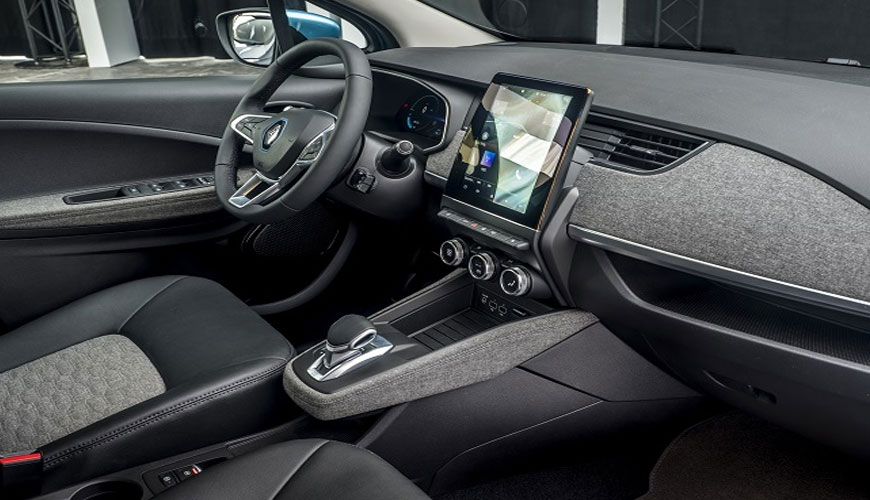

The “Renault D49 3001 Emitted odors - Internal equipment parts - Intensity evaluation and general odor characterization” standard developed by the French Renault automobile company describes test methods for the intensity evaluation and general odor characterization of equipment parts used in the interior of vehicles.

The enchanting smell of a new car is partly a result of the materials used in its construction. This smell, often described as “new car smell”, consists mainly of volatile organic compounds. These are chemicals that easily evaporate into the air at room temperature. There are many factors that create this smell.
An odor occurs when a substance releases molecules (particles) into the air. In order to detect the smell, those molecules must reach the nose. The more volatile the substance, that is, the more easily it disperses particles, the stronger its odor. What makes a car smell new are volatile organic compounds (VOCs) released from foam rubber, vinyl, carpet, plastic, sealants, adhesives, leather and similar interior (trim) materials. These compounds are chemicals that easily evaporate into the air and are generally not harmful in small amounts.
If your car has leather seats, it may emit a pleasant, faint leather smell. Leather is often associated with luxury and comfort, and its scent can be quite appealing. The interior of a car contains a variety of plastic and vinyl components, such as the dashboard and upholstery. As these materials age, they release volatile organic compounds, contributing to the overall odor. During the manufacturing process of cars, adhesives and sealants are used to bond various parts of the car's interior. As these materials cure, they release volatile organic compounds that are added to the aromatic mixture. Carpets and upholstery, like other interior materials, can emit odors. Their chemical composition plays a role in the overall odor. The specific scent varies from car to car depending on the materials used and the manufacturing processes used by different automakers.
Although the smell of a new car is undeniably attractive, it cannot be said to be very long-lasting. Over time, materials age and as the gas released decreases, so does the release of volatile organic compounds. Factors such as temperature, sunlight, and interior cleanliness also affect how long the new car smell lasts.
Volatile organic compound analyzes performed in advanced laboratories are performed directly on the material or through gas sampling. Odor analysis services help determine the human sensory or molecular properties of products and materials. Desired and undesirable odors, malodors, and the effectiveness of odor reduction are detected and documented. For this purpose, individual or standardized VOC emission tests are carried out to determine volatile organic compounds emitted by products and materials.
The test method defined in the Renault D49 3001 standard is also within this scope. When assessing intensity and general odor characterization, the following main considerations are taken into account: how is the product odor perceived, is there an odor problem, how does the product perform over time, does the product increase odor perception, does the product reduce or mask bad odor, is the product in the comparison test How does it perform and how is it proven that the product works?
In the next step, the most appropriate techniques are determined. The main techniques are: odor and aroma profiling, odor-free identification, efficacy testing, cross-testing of product lines, longevity testing of odors, evaluation of masking quality, calculation of odor reduction rate, molecular screening and other studies as needed.
Among the numerous testing, measurement, analysis and evaluation studies carried out for businesses in various sectors, our organization, with its trained and expert staff and advanced technological equipment, carries out the intensity evaluation and general odor characterization of odors emitted from internal equipment parts (trim materials) within the scope of the Renault D49 3001 standard. It also provides testing services for
To get an appointment, to get more detailed information or to request an evaluation, you can ask us to fill in our form and reach you.